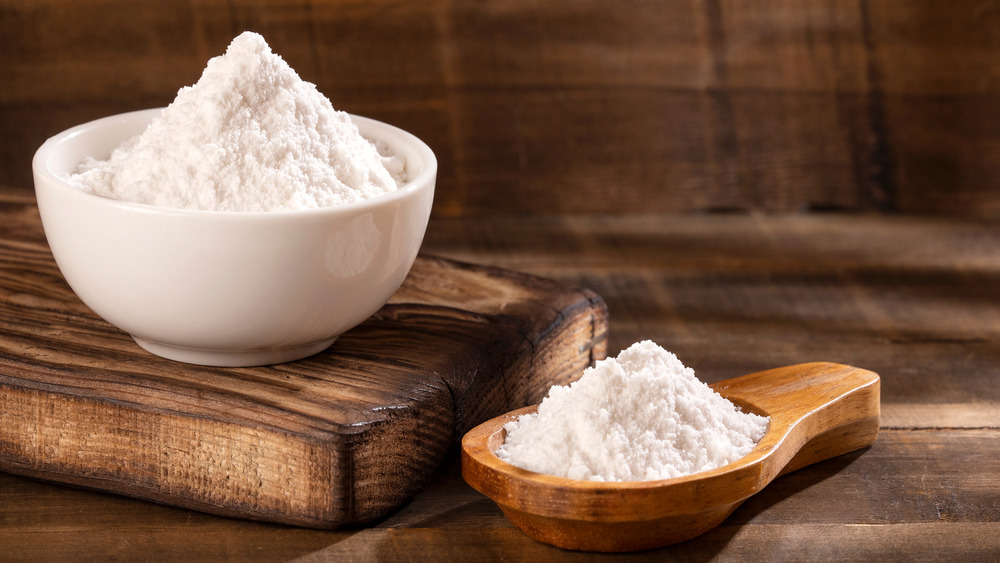Jamie Oliver Uses This Substitute When He Runs Out Of Self-Raising Flour
Self-raising flour, or flour that is enhanced with a leavening agent, is an ingredient used by bakers to produce an even rise in baked goods such as muffins, biscuits, and cakes (via My Recipes). Created by an English baker in the 1800s and marketed to sailors as a way to enhance their baked goods onboard, self-raising flour first arrived in the United States in 1849 when it was patented as an invention; today, however, it is produced and available in mass quantities in the form of baking mixes (via Bob's Red Mill).
While self-raising flour is readily available for purchase, you probably have all the ingredients you need at home to make it yourself; and the process couldn't be simpler. In a recent Twitter thread breaking down Jamie Oliver's recipe for yeast-free pizza dough, the chef shared that those who don't have the required self-raising flour on hand can simply sift two teaspoons of baking powder into 150 grams of plain flour (or one cup, according to Weekend Bakery). Jamie's recipe calls for the baking powder to be sifted into the flour, which is an important step in ensuring even distribution of the leavening agent, as powdered ingredients do not typically mix well on their own.
As easy as Jamie Oliver's homemade self-raising flour recipe may seem, however, it is essential that you double check your ingredients carefully, as mixing up baking powder with baking soda could have some disastrous results (via Bon Appétit).
The difference between baking powder and baking soda
The main ingredient in Jamie's homemade self-raising flour, baking powder, is a chemical leavening agent made from baking soda and a blend of acids specifically crafted to trigger carbon dioxide (CO2) production at different times throughout the baking process (via Phys.org). Baking soda, or sodium bicarbonate, produces gas bubbles as soon as it interacts with an acid, creating a build-up of air pockets that causes a dough or batter to rise. Because this chemical reaction happens immediately upon contact, however, powdered acids are added to sodium bicarbonate to create baking powder, which provides a more controlled reaction and even rise.
According to Bakerpedia, the first acid combined with baking soda to make baking powder, monocalcium phosphate, does not react with sodium bicarbonate until a liquid is introduced. This ingredient causes leavening to begin as soon as the powders are stirred into a wet batter or dough. The second acid found in baking powder, either sodium acid pyrophosphate or sodium aluminum sulfate, does not react with sodium bicarbonate until it is introduced to both liquid and heat, which means a second chemical leavening process occurs in the oven (via GCI Ingredients). The more chemical leavening that occurs, the more pockets of air will form within the dough or batter, ultimately producing a fluffier result.
Baking soda and baking powder cannot be used interchangeably or as a substitute for the other, so when making Jamie Oliver's recipe, make sure you are using baking powder (via Bon Appétit).

